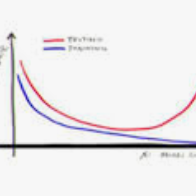Fine-tuning large pre-trained models with task-specific data has achieved great success in NLP. However, it has been demonstrated that the majority of information within the self-attention networks is redundant and not utilized effectively during the fine-tuning stage. This leads to inferior results when generalizing the obtained models to out-of-domain distributions. To this end, we propose a simple yet effective data augmentation technique, HiddenCut, to better regularize the model and encourage it to learn more generalizable features. Specifically, contiguous spans within the hidden space are dynamically and strategically dropped during training. Experiments show that our HiddenCut method outperforms the state-of-the-art augmentation methods on the GLUE benchmark, and consistently exhibits superior generalization performances on out-of-distribution and challenging counterexamples. We have publicly released our code at https://github.com/GT-SALT/HiddenCut.
翻译:利用具体任务数据对经过培训的大型模型进行微调,在NLP中取得了巨大成功。然而,事实证明,自控网络中的大多数信息是多余的,在微调阶段没有被有效利用。这导致在将获得的模型推广到外域分布时结果较差。为此,我们提议采用简单而有效的数据增强技术,即HideCut,以更好地规范模型,鼓励它学习更通用的特征。具体地说,在培训期间,隐藏空间的毗连区域被动态地和战略性地删除。实验显示,我们的隐藏计算机方法超过了GLUE基准的先进增强方法,并一贯显示,在分配之外和具有挑战性的反抽样方面,我们一直在展示出优异性的一般性表现。我们在https://github.com/GT-SALT/HiddenCut上公开发布了我们的代码。



